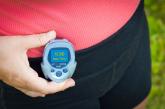Young or old, fatigue is a prominent, persistent symptom
Fatigue is not just a problem in older adults with rheumatic and musculoskeletal diseases, as Ellen Dalen Arnstad, MD, pointed out in a separate session at the congress. Younger adults and adolescents are also often affected, as demonstrated by data she presented from an 18-year follow-up study of individuals with juvenile idiopathic arthritis (JIA).
An oft-used definition of fatigue, she said was “a persistent, overwhelming sense of tiredness, weakness, and exhaustion.” This results in “decreased capacity of physical function or mental work and is unrelieved by sleep or rests.”
Dr. Arnstad, a pediatric rheumatologist at the Hospital of Levanger in Norway and PhD student at the Norwegian University of Science and Technology in Trondheim, presented data from the Nordic JIA study of 377 subjects who were assessed for fatigue. These showed that there were higher levels of fatigue among participants with active disease, pain, and self-reported health problems. The mean Fatigue Severity Scale score was 3.2 overall, with a higher score in females (3.5) versus males (2.5).
“We found highest mean fatigue scores among those with bad physical and mental health,” Dr. Arnstad reported. Just over a quarter (26%) of patients had severe fatigue, which was defined as a score of 4 or more.
“Fatigue is a prominent symptom in JIA after 18 years of disease duration,” and it “should be measured in a long-term follow-up, both in clinical and research settings,” Dr. Arnstad said.
How should fatigue in RA be assessed?
“Fatigue is recognized by OMERACT [Outcome Measures in Rheumatology Clinical Trials group] as being one of the measured outcome factors in rheumatoid arthritis, one that we should all be taking care of,” Dr. da Silva said. It was added alongside the core set of measures that should be used in all trials “wherever possible.”
So how should fatigue be measured in practice? There are lots of instruments available. Indeed, Dr. da Silva and associates recently counted more than 12, but there is no consensus and no guidelines on which should be used.
“We propose to use a single-item instrument as a screening tool, like the BRAF NRS [Bristol Rheumatoid Arthritis Fatigue Numerical Rating Scale] or RAID-F [Rheumatoid Arthritis Impact of Disease–Fatigue domain], which would be supplemented by additional multidimensional assessments if significant levels of fatigue are identified,” he said in an interview. “This will be particularly useful when the aims are to explore causality of fatigue or the efficacy of an intervention.”
Dr. da Silva noted after his presentation that the RAID-F score is routinely used at his practice. “It’s an extremely useful instrument in trying to assess how the patient is dealing with rheumatoid arthritis,” he said. He emphasized that fatigue needed to be considered separately from disease activity and that “it should be part of treatment targets and it should be regularly measured in both research and clinical practice.”
